| Home/BOING/BOING #1/Interview of Gianluca Girelli | Last update: 2024-12-25 |
|
|
|
|
About / News / Store / Contact us GDG-Entertainment was founded in 2014 by a group of enthusiastic Italian amigans including Gianluca Girelli. Fan of the "Point & click" adventure games of the 80s, they already created "The Secret of Middle City" a few years ago. "Cybersphere" was released and is available here. The interview was initially published in BOING French magazine issue #1 (July, 2021). Hello Gianluca, could you introduce yourself to our readers ? Hello, everyone. I'm Gianluca Girelli and I'm 51, which means that I was there when everything happened, at the beginning of the '80s. I've always been fond in computers, even before actually knowing what they really were. My first contact with them was with the TV show "Space 1999": it was 1976 (I was six years old) and I had already decided I wanted to be a programmer. I got my first computer (a Commodore C128) when it first came out and I was attending a tech school in order to get a diploma in computer science. That C128 was (and still is today) my platform of choice, even though back in those days I did experience and code also with my friends' VIC20s and Sinclair Spectrums. Later on I got an Amiga2000HD which, unfortunately, I never had the chance to use that much for a million of different reasons. Despite not being in the coding business for a living, coding is what I like the most and that's why, in the end, I managed to develop "The Secret of Middle City" -a point 'n click adventure- and "CyberSphere" -an icon-driven one-. Both games target hi-end platforms: PC, Mac, Linux and the full range of Amiga-like next-gen systems (AmigaOS4, MorphOS and AROS). Do you still own any Amiga today ? I still have my A2000HD with me. Sadly, the SCSI controller for the HD is long gone and, since I was "out of the business" for quite some time, I never fixed it or replaced it. I do have an A1200, bought on eBay a few years ago, but what I use is my next-gen Amiga based on a SAM motherboard from ACube Systems and running AOS4.1FE. My "classics" are really currently underused (or not used at all), but I plan to go back to them real soon. What did you do with your next-gen Amiga ? Is it the computer you use for the development of your projects ? 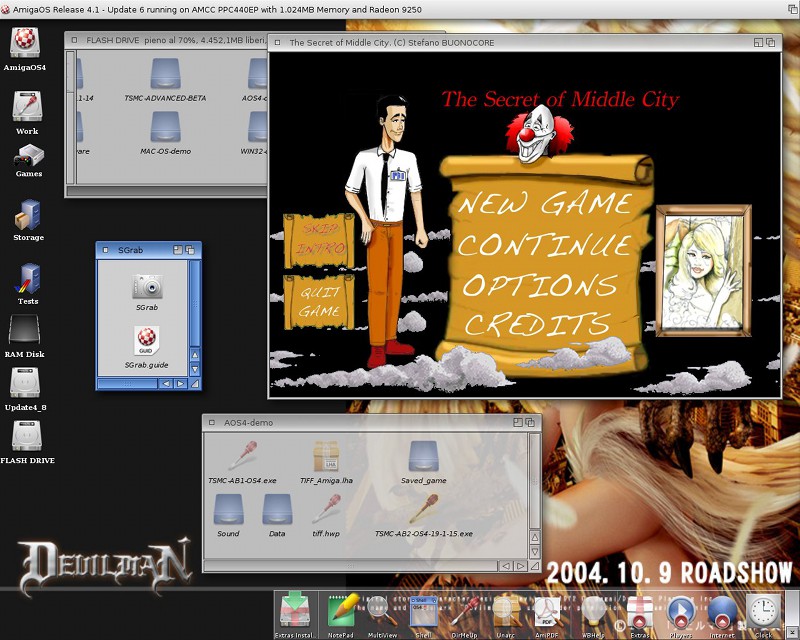 When I got back to the scene I used my next-gen Amiga for some software localization projects (as you know) as well as tinkering with the outstanding Hollywood MAL (Multimedia Application Layer) by Andreas Falkenhahn in order to get back to coding (especially game coding). Previously, I cut my teeth on the PlayStation2 Linux Kit, where I coded a tech demo for a (never released) "1945" clone. Also, I extensivelly used Cloanto's AmigaForever suite to develop my engine for text adventures (written in ARexx). My Sam is indeed the platform where I test and adjust my current projects, even if coding is normally done on my laptop (running Hollywood) since I am often away from my Sam. You seem to like coding video games. What are your favorite games ? As I mentioned in the introduction, I've always wanted to be a programmer and the reason I like games is not for the games in themeself, but because I believe they sum up the entire art of coding. If you think about it, in a game you can find: graphics (2D, 3D or mixed technics), sound (from simple sound effects to full-fledged multilingual dubbing), artificial intelligence (even tough "scripted" for the most part), archiving and data compression algorithms, level and character designing "middleware"and so on. Furthermore, you may have to implement a local or online co-op system.. Having said that, I do like to play games as well; trouble is, I suck at most of them (LOL!). Back in the day almost all games revolved around platformers and shooters and I couldn't complete a single one. Maybe that's why I decided to go for interactive fiction instead. Text and semigraphic adventures where my playground, starting with "The Count" by Scott Adams, then moving to more complex things up to the unforgettable "Zork". Nowadays my preferred genres are action-adventures and JRPGs. When did you found GDG-Entertainment ? Is it a gathering of several coders or something more personnal ? After getting back to the Amiga I also started a collaboration with Bitplane, back then the only printed Italian Amiga magazine. For them I wrote coding tutorials for ARexx and Hollywood and, in time, I developed a frienship with Davide Palombo, since then my additional coder. Together we decided to found an indie studio, after getting in touch with Giuseppe Parise, the graphic artist. GDG-Entertainment (from our initials Gianluca-Davide-Giuseppe) was found at the end of 2013. We didn't have any real experience nor a credible project in mind but we started to experiment with different things. In a way, it was very personal, and it became even more so when Stefano Buonocore asked me to develop "The Secret of Middle City". That was a professional project that I deemed necessary to pursue in order to build up experience yet, since all the assets were already present (locations, animations frames, props, musics and so on), I mainly worked on it by myself. Davide fixed some additional code and Giuseppe only took care of the company logo and website. Sadly, both Stefano and Giuseppe, although very young, are no longer with us. That was a scar in my soul that almost made me quit coding, but here I am again. A really sad story indeed ... For our readers who maybe don't know "The Secret Of Middle City" yet, can you tell us a bit more about the game ? 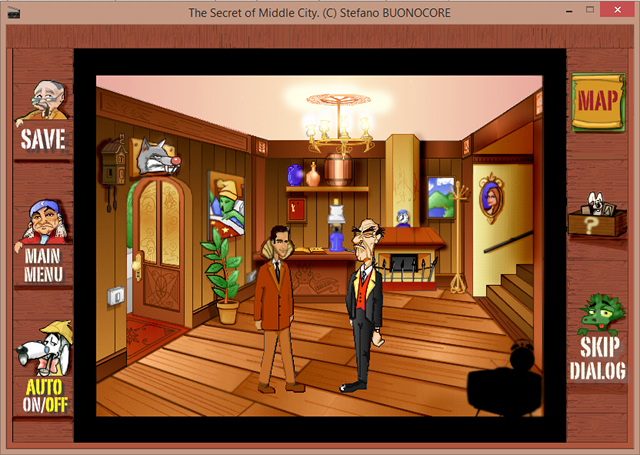
TSoMC is an "old-style" graphic adventure inspired by the 80ies and 90ies "point 'n click" videogames and uses a peculiar italian-style humor and visuals. The story unfolds in a tipical North American mountain town and sees the main character (a goofy detective) strive among mysteries and false leads in order to solve a case of presumed homicide. Built over 50 locations and about 60 non-playing characters, the game was conceived as a parody of "Twin Peaks", the old and famous TV show of the '80ies. Stefano dedicated this project a considerable part of his life (roughly 15 years). At a certain point there even was a Nintendo DS prototype of the game, but the mainstream industry kept turning him down, deeming the game too advanced of too retro depending on the situation. Finally, Enrico Vidale (Virtual Works, ACube Systems) pointed Stefano in my direction and the dream became true. I took the lead of the project in February of 2014 and TSoMC was finally completed and commercialized in July 2015. And now, here is a brand new game, Cybersphere : what is all about ? 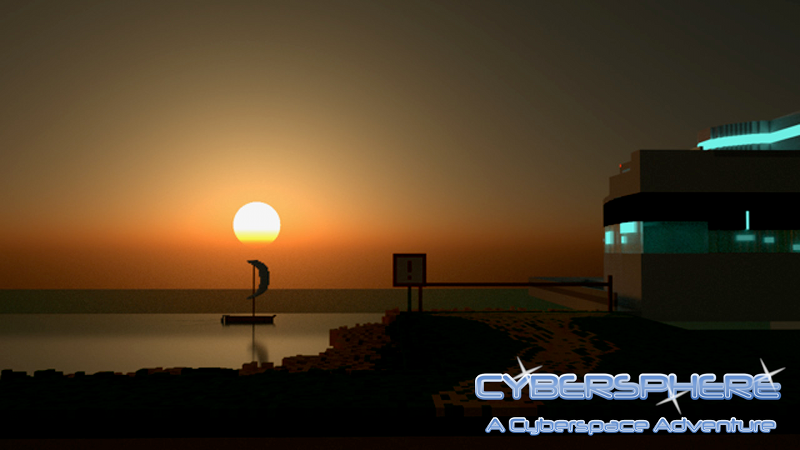
In a way, CyberSphere is something that started a long, long time ago. Its roots date back to the '80ies when, as said, I was experimenting with text-adventure both by playing them and by writing simple parsers to be used as a game engine. Back then I only developed fantasy-themed prototypes. In more recent years, around 2010 while learning ARexx, I wrote an entire cyberpunk-themed text-adventure that eventually became the core engine of my latest game. CyberSphere is an icon-driven adventure that mimics text-adventures mechanics in a graphic way. On a static background you can move from location to location and you can interact with it: by pressing the button "N", for example, you move to a northern location while selecting the "magnifing glass" button you examine it: it's exactly like typing "go north" and then "examine room"; you just do it by pressing buttons. Every location, albeit being graphically shown, is also coupled with a text box that tells you the story. The game is localized in three languages: Italian, English and French (thank you, Jerome!). Like TSoMC, even CyberSphere is entirely coded in Hollywood. How many people were involved in Cybersphere development ? 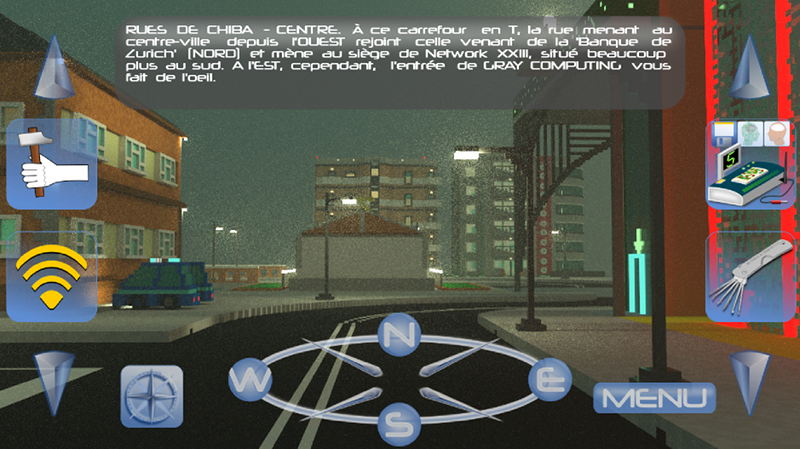
During the prototyping phase only myself and my graphic artist: Marco Riva. Marco started with few concept arts but then did and unbelievable job in shaping the game world by the combined use of "Magica Voxel" (a 3D art software), Inkscape and Gimp. Soon other people joined the works, the first of them being of course Davide. Aside from the additional coding he and his brother helped me with the sound effects; Martin Eriksson (DJ Metune) composed a very inspiring soundtrack; Tony Aksnes, Simone Battaglioni and Francesco Fiorentini where my main betatesters, together with Ruggero Simoncelli and my son Simone. A few others where involved in redesigning the company logo and with some legal consulting. And then there was my Official French localizator, proofreader and betatester ... A dozen people all together. It seems that you like very much "Neuromancer" novel. Can you speak about the different cultural references of the game ? 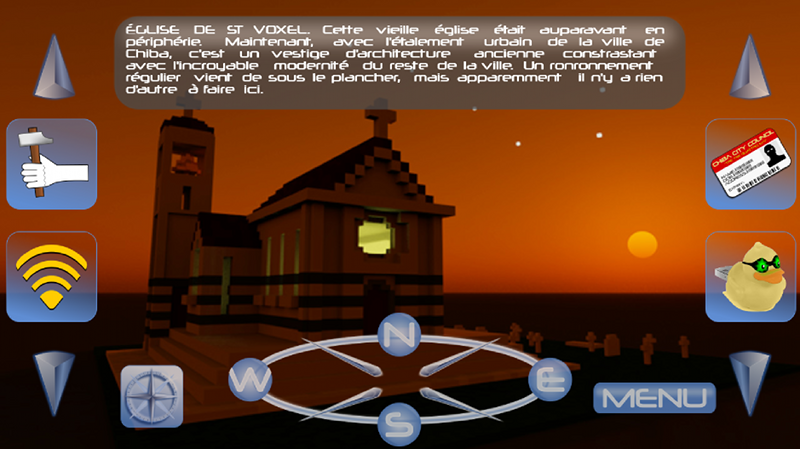
I consider William Gibson's "Neuromancer" an absolute masterpiece and cyberpunk is, by far, my favorite literary genre. Everything in the game reflects my love for Gibson's novels: not only names or situations, but the game world itself is actually implemented via a matrix data structure. Having said that, Cybersphere is a much more personal project that wants to tribute not only Gibson's works but also TV shows (Max Headroom), movies (Videodrome), animes (Ghost in the Shell) and the computer history of the '80ies (with the Amiga systems above all). Basically, it is a reflection of my life as a teen-ager and young adult. Nonetheless, I did a considerable effort to avoid making the game a simple meltpot of trivial situations and the story unfolds in a totally different way compared to "Neuromancer". I hope it shows. You used Hollywod programming language to create both games : what's your opinion about it ? What are the advantages and disadvantages ? Based on LUA, an open source scripting language also used by the mainstream gaming industry, Hollywood is a really powerful application layer that makes coding very easy. Its syntax is similar to BASIC yet it sports deeply advanced features and it can also be used with an Object Oriented approach. The dev team is constantly bound to add new and modern features and a dedicated SDK allows you to code your own plug-ins. It really made my life easier, and cross-compiling for many different architectures (consoles excluded) can be done by simply pressing a button. Nonetheless, despite the fact that the team really seems to be holding "the hardest working men in code business", it is still a niche product if compared to other frameworks. Less people working with it means less possibilities to find a bug and, when something important comes out, you need to give proper time to the devs to track it down and fix it. This could lead to delays in your work, but in the end it all works out fine. You use Holywood but you don't release your games for "classic" Amiga : is there any reason ? There are indeed many reasons behind it. When I purchased my Sam motherboard and Hollywood framework we were still living a period in which the so-called Amiga next generation seemed about to flourish and ready to do the next step: a lot of new utility softwares were available or in active development, others were planned in a matter of months. Also, since in my early Amiga years I only had the chance to use my A2000 as a productivity machine, I had no real experience of coding on the "classics". Furthermore, when Stefano "hired" me to develop TSoMC the graphic assets he provided were too heavy to be supported by "classic" machines. After Stefano and Giuseppe loss, I almost quit coding and when I went back to it my focus shifted on the mobile platforms. Although there still isn't an Android version of CyberSphere, User Interface, graphics and sounds were developed from scratch for hi-end machines; the rest, as they say, is history. I never did it on purpose and I would actually like to code something for the original machines; it may eventually happen, but not soon. There are a few other projects on your website as for example, "Sub Zero Vs Amiga" or "Robotrumble" ? Will these projects be released ? "Sub Zero Vs Amiga" was one of my first attempts at game coding; in particular, it was a tech demo and prototype for a 1vs1 beat 'em up game, beside being a tribute to an iconic saga (Mortal Kombat) and our beloved Amigas. I never planned to release that game since I obviously do not own the intellectual property to do so, even though at a certain point I released my proprietary source code for study purposes. "Robotrumble" should have been the "real" thing and the first game of GDG-Entertainment, although only after an in-house redesigning of characters since the tech demo once again used copyrighted material as a tribute. A game that we started to put into a concept stage was "The Princess of Bandir", with the graphic direction of Giuseppe. It should have been a fusion of genres with a mixed gameplay inspired by "Myst" and "Shadow of the Beast" but, as we learned in this very interview, things seldom go as planned ... Do you have any future projects ? 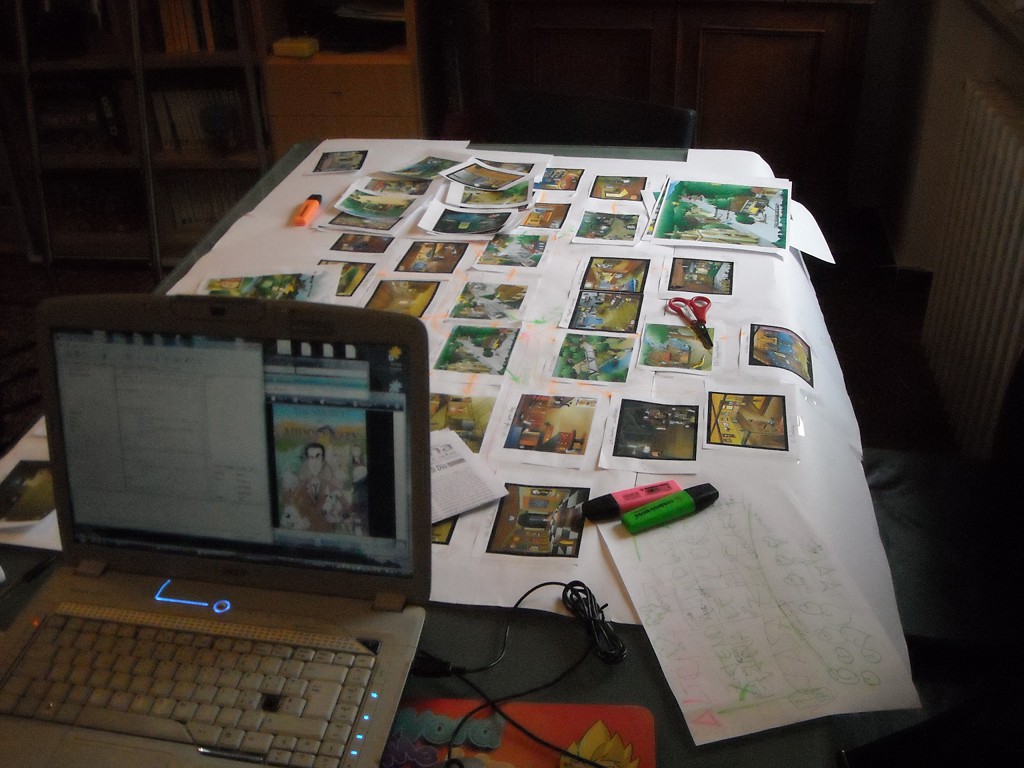
I have tons of future projects, but unfortunately they won't see the light soon. I am living a period of my life in which I am about to change job assignement and, in addition, I also have family matters to attend to. In such a situation I cannot guarantee a full dedication to "choral projects" where you depend from, but at the same time support, other teammates. Not to mention that, after two high-end projects that spanned over more than seven years, I really feel the need to ease it off and concentrate again on my beloved 8-bit systems. Basically, I foresee the next six to twelve months concentrating on a solo project, very likely a crime-thriller text-adventure for C64/128. What will come next only time will tell. What do you think about the current Amiga situation : optimist or pessimist ? It really hurts my to say that I am very pessimist about the entire situation. Almost an year ago I wrote an entire article on the matter (you can retrieve it here). Despite a lot of the reasons why I will quit developing stuff for OS4 (and next-gen Amiga-like OSs like MorphOS and AROS) are strictly personal, it is a fact that: hardware and software development is not going anywhere anytime soon; the long-time promised laptop is still in progress but seems to be constantly off-synch, never matching the current needs for power and applications; finally, developing a game for the standing OS4.x generation is a nightmare, meaning that targeting software specifically for it will just sell a handful of copies cutting out, at the same time, the entire community of those using the "Classic" (or one of its many emulators). In addition, due to the big gap in performances between the classic and the OS4.x generation (especially in terms of available memory to allocate graphics) and despite the power and flexibility of frameworks like the awesome Hollywood MAL by Andreas Falkenhahn, adapting an OS4.x title for the classic is simply not possible, unless you decide to rebuild from scratch all of the graphic assets. Definitely, in this period of my life, an impossible task for a one-man army like I often am. I do not expect everyone to agree with me, but sadly it is how I perceive the situation right now. I really hope the future proves me wrong, since there really are loads of awesome people out there that do not deserve this and keep working hard every day, but I still don't see any light at the end of this tunnel. What do you think about new Amiga machines like Vampire or A1222 ? Is it something that could make you more optimist ? Indeed it could! Vampire is already a reality and despite I still don't have a full understanding of how it works it looks like Vampired-powered classic Amigas could be more than fit to nicely run my games. I personally have less information on the A1222 but it could definetly be another great option. In a way it makes me think that instead of struggling for years around an unfit next-gen, we could have invested on powering up the classics from the very beginning. Of course, it's always easy to judge after things already happened, so after I settle down my personal matters I might as well just roll up my sleeved and go back to the hard work. After all, a true Amigan never surrenders. Thank you Gianluca for answering our questions. It was really interesting. Do you want to add a few words ? Maybe in Italian ? Thanks for this interview. It gave me time to focus and rethink my priorities and opportunuities. Many thanks to the entire Amiga community (all "flavors" included, be them real or emulated). Thanks to all the readers of this magazine for their passion and for giving me the opportunity to share my thoughts. Non arrendetevi mai: una volta Amighista, Amighista per sempre! |
|
|
Copyright © 2000-2021 Boing Attitude :). All rights reserved. Logos & drawings/menu © Aïto. |
|
| Home/BOING/BOING #1/Interview of Gianluca Girelli |